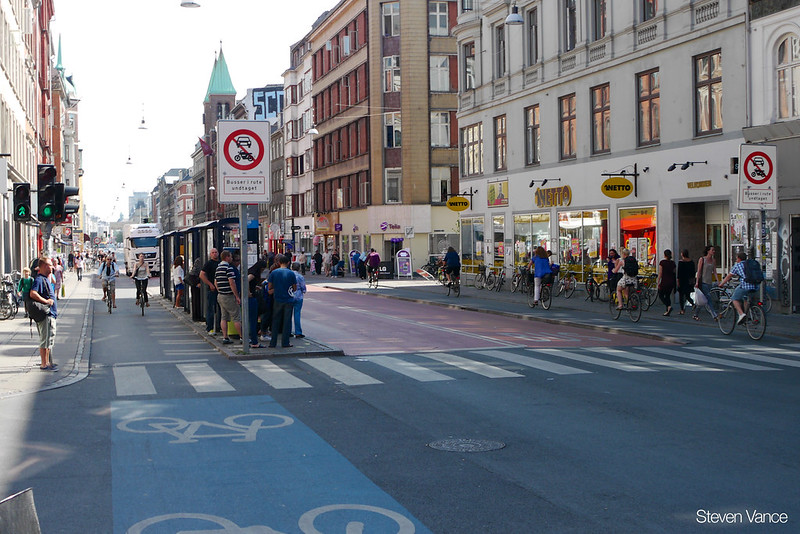Wow, I didn't realize that Ottawa and Calgary were hundreds of years older than Toronto! I guess you learn something new each day.
Neither of those cities, though, took a main road with buisness, garage openings and condo entrances and closed it to traffic for a stretch of over 2km.
Okay I'm being needlessly sarcastic, but the point is that there's nothing delusional about the idea of pedestrian streets, woonerfs, and transit malls in Toronto. I don't get how the age of the city means anything when I see so many people walking around the city all year round. I can think of quite a few places in Toronto that could function like
this street in Ottawa.
Not sure if you were continuing on your sarcasm there but comparing a short street within the Byward Market to the stretch of King Street we are talking about in this thread is a bit like going to Montreal with an image of the Distillery District and saying "this is what you could do with St. Catherine Street between Guy and Univeristy".
Looking at other cities is fine (actually good) but plucking examples like this one is so out of context that it takes the discussion backwards (IMO).
A strange Canadian trait I've noticed is that a lot of us think that we have winters that are uniquely cold and harsh. It's just not true but it contributes to "it would never work here" defeatism.
I don't think our winters are as harsh as we sometimes think (particularly in the GTA/S. Ontario) but we do have to consider climate when we look at the need/value of certain things. So, yes, Melbourne is a wonderful example of a city with pedestiran streets and cafes, but you have to consider that
part of the reason that it works there is that their harshest weather months are, roughly, late march/early April here.
That is not to say we can't do pedestrian streets/areas...but I do wonder if it doesn't mean that we should not be taking a 2km stretch of a important road and closing it to automobiles 365 days of the year.
I continue to believe that the right thing to get the King Streetcar working better (which I think was the impetus behind this thread) is a relaunching of the diamond lanes.
1. New, bigger/brighter signs, telling people that can't be in those lanes between 6 and 10 in the a.m. and 3 and 7 in the p.m.
2. New, bigger/brighter signs, telling people they can't stop (never mind park) in the right lane in those hours (including - importantly - telling the Hyatt that cab service to their guests has to be off of Widmar not King)
3. New, bigger/brighter signs, telling people that they cannot turn left off of King during those hours.
4. New, bigger, fines for offending
5. A 3 month enforcement blitz by the police to get the message through
6. Ongoing enforcement after the blitz
This will get the Streetcars moving. Over the past week I have made it a point to raise the restrictions on King with people (including last night as I drove along King to get out to Liberty Village for a pre-show dinner). Not one person that I have mentioned it to had ever heard of the restrictions and, in fact, most think I am making it up.






